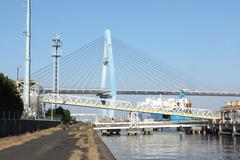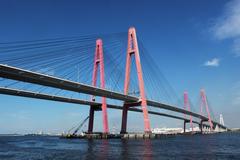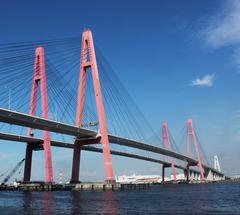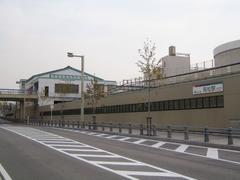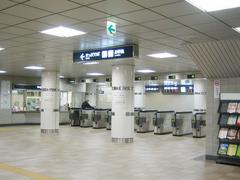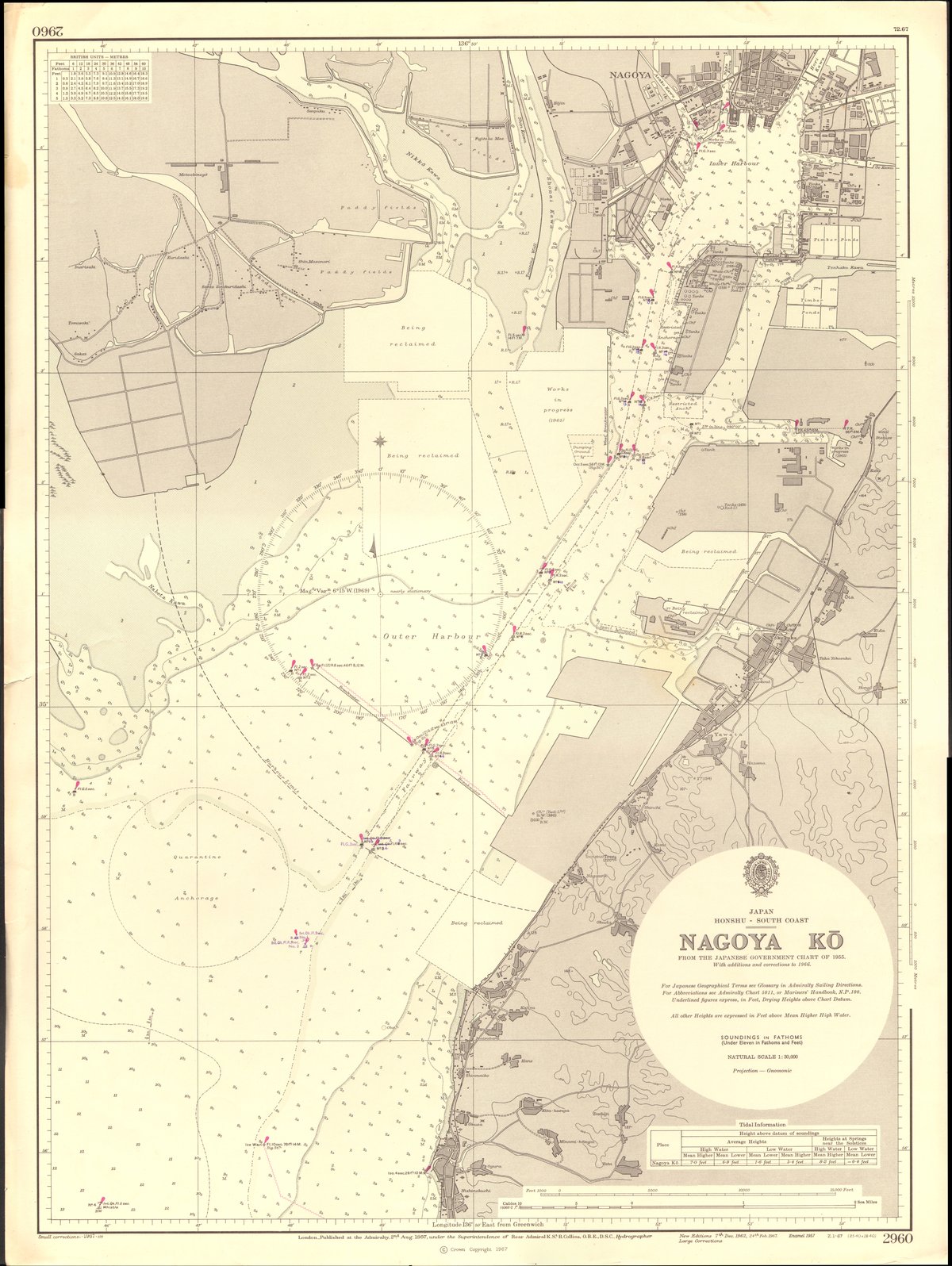
Visiting Port of Nagoya: Hours, Tickets, and Historical Sites in Nagoya, Japan
Publication Date: 17/08/2024
Introduction to the Port of Nagoya
The Port of Nagoya, situated in Ise Bay, is one of Japan’s most significant maritime hubs, reflecting a rich tapestry of historical evolution, modern infrastructure, and cultural vibrance. Initially a modest fishing port, its strategic location on the Pacific Ocean catalyzed its transformation into a bustling center for trade and commerce, especially during the Edo period (1603-1868) (Nagoya Port). By the 1960s, the port had undergone substantial modernization, earning the title of Japan’s busiest port—a distinction it retains to this day. Handling an annual cargo volume of 196 million tons, the Port of Nagoya is integral to Japan’s automotive industry, serving as the nation’s largest car exporter (PlanetWare).
Beyond its economic contributions, the Port of Nagoya has emerged as a cultural and educational landmark, offering a variety of attractions that draw both locals and tourists. The Port of Nagoya Public Aquarium, the Nagoya Maritime Museum, and the Fuji Antarctic Museum are just a few highlights that showcase the port’s blend of history, science, and entertainment (Japan Experience). Festivals like the annual Nagoya Port Festival further enrich the cultural landscape, celebrating the port’s maritime heritage with fireworks, food stalls, and live performances (Nagoya Port).
Whether you are interested in exploring marine life, delving into maritime history, or simply enjoying a leisurely day by the sea, the Port of Nagoya offers a diverse array of experiences that make it a must-visit destination in Nagoya.
Contents Overview
- Historical Background
- Modern Development
- Economic Significance
- Cultural and Educational Importance
- Maritime Museum and Antarctic Exploration
- Festivals and Events
- Architectural and Scenic Highlights
- Recreational Facilities
- Environmental Initiatives
- Visitor Information
- Travel Tips and Nearby Attractions
- FAQ
- Conclusion
Historical Background
The Port of Nagoya, located in Ise Bay, has a rich history that dates back thousands of years. Initially, it served as a modest fishing port, but its strategic location on the Pacific Ocean soon made it a vital hub for trade and commerce. The port’s significance grew exponentially during the Edo period (1603-1868), when it became a crucial point for the transportation of goods and people between Edo (modern-day Tokyo) and Osaka. This period marked the beginning of Nagoya’s transformation into a bustling trade center.
Modern Development
In the 20th century, the Port of Nagoya underwent significant modernization to accommodate the increasing demands of global trade. By the 1960s, it had become Japan’s busiest port, a title it still holds today. The port handles an impressive volume of cargo, with 196 million tons processed annually, making it the largest in Japan by volume. It is also the country’s largest car exporter, a testament to its pivotal role in Japan’s automotive industry (Nagoya Port).
Economic Significance
The economic impact of the Port of Nagoya cannot be overstated. It serves as a critical gateway for both imports and exports, facilitating the flow of goods not only within Japan but also to international markets. The port’s infrastructure supports a wide range of industries, including automotive, electronics, and textiles. The presence of major corporations like Toyota, Honda, and Mitsubishi in Nagoya underscores the port’s importance in the global supply chain (PlanetWare).
Cultural and Educational Importance
Beyond its economic contributions, the Port of Nagoya has also become a cultural and educational hub. The area around the port has been redeveloped to include various attractions that draw both locals and tourists. One of the most notable is the Port of Nagoya Public Aquarium, which features a large collection of marine life and hosts popular dolphin shows. The aquarium is divided into two main buildings: the North Building, which houses the Main Pool for dolphin and killer whale performances, and the South Building, which focuses on marine life from the Antarctic to the tropics (Japan Experience).
Maritime Museum and Antarctic Exploration
The Nagoya Maritime Museum, located in the Nagoya Port Building, offers a comprehensive overview of the port’s history and its current operations. The museum features interactive exhibits, including a crane simulator and a ship’s cannon, providing visitors with a hands-on learning experience. Adjacent to the museum is the Fuji Antarctic Museum, housed in the historic icebreaker ship Fuji. This vessel played a crucial role in Japan’s Antarctic exploration efforts and now serves as a museum dedicated to the history of polar exploration (Nagoya Port).
Festivals and Events
The Port of Nagoya is also a vibrant cultural venue, hosting numerous festivals and events throughout the year. The most popular is the Nagoya Port Festival, held annually on Marine Day (Umi no Hi) in July. This festival features spectacular fireworks, food stalls, and live performances, attracting large crowds. The festival not only celebrates the port’s maritime heritage but also fosters a sense of community among residents and visitors alike (Nagoya Port).
Architectural and Scenic Highlights
The Nagoya Port Building is a striking architectural landmark that houses both the Maritime Museum and an observatory. The observatory offers panoramic views of the port, the sea to the south, and the cityscape of Nagoya to the north. Visitors can enjoy breathtaking vistas of iconic buildings such as Midland Square and Lucent Tower. The port area also features several open spaces, including the Garden Pier People’s Park and Shiokaze Plaza, providing scenic spots for relaxation and leisure activities (Japan Experience).
Recreational Facilities
For those seeking entertainment, the port area offers a variety of recreational facilities. Sea Train Land is an amusement park featuring the largest Ferris wheel in the Chubu region, a roller coaster, and other family-friendly attractions. During the winter months, the park is illuminated with festive lights, making it a popular date spot. Additionally, the Jetty Food Court and Shopping Complex provides a diverse range of dining and shopping options, from traditional Japanese cuisine to international brands (Nagoya Port).
Environmental Initiatives
The Port of Nagoya is also committed to environmental sustainability. Various initiatives have been implemented to reduce the port’s ecological footprint, including the use of renewable energy sources and the promotion of green logistics. The port’s management works closely with local and international stakeholders to ensure that its operations are environmentally responsible, contributing to the global effort to combat climate change (Japan Travel).
Visitor Information
Planning a visit to the Port of Nagoya is easy and convenient. The port is accessible via public transportation. From Nagoya Station, visitors can take the JR train line to Kanayama Station and transfer to the Meiko subway line to Nagoyako (Nagoya Port) Station. The port is just a short walk from the station. Here are some key details for your visit:
- Visiting Hours: Most attractions, including the Nagoya Maritime Museum and the Port of Nagoya Public Aquarium, are open from 9:30 AM to 5:30 PM. It’s advisable to check specific visiting hours on the official websites before planning your visit.
- Ticket Prices: Combo tickets are available for the aquarium, the Fuji Antarctic Museum, and the Nagoya Maritime Museum, offering a cost-effective way to experience multiple attractions. Prices vary, so consult the official sites for the latest information.
- Guided Tours: Many attractions offer guided tours in multiple languages to enhance your visit. Booking in advance is recommended.
- Best Times to Visit: Spring and autumn are ideal for visiting due to the pleasant weather and lower tourist crowds.
Travel Tips and Nearby Attractions
- Practical Tips: Wear comfortable walking shoes as you’ll be exploring various attractions within the port area. Consider bringing a hat and sunscreen if visiting during summer.
- Nearby Attractions: Don’t miss the Nagoya Castle, Atsuta Shrine, and Osu Shopping District, which are all easily accessible from the port area.
FAQ
- What are the visiting hours for the Port of Nagoya? Most attractions are open from 9:30 AM to 5:30 PM.
- How much do tickets cost for the Nagoya Maritime Museum? Combo tickets are available, and prices vary. Check the official website for the latest information.
- Is there public transportation to the Port of Nagoya? Yes, the port is easily accessible via the JR train line and Meiko subway line.
- Are guided tours available? Yes, guided tours are offered at many attractions and can be booked in advance.
Conclusion
In summary, the Port of Nagoya is not just a vital economic hub but also a cultural and educational landmark. Its rich history, modern facilities, and diverse attractions make it a must-visit destination for anyone traveling to Nagoya. Whether you’re interested in maritime history, marine life, or simply looking for a place to relax and enjoy the sea breeze, the Port of Nagoya has something for everyone.
Sources and Further Reading
- Nagoya Port. (n.d.). Retrieved from Nagoya Port
- PlanetWare. (n.d.). Nagoya, Japan. Retrieved from PlanetWare
- Japan Experience. (n.d.). Nagoya Port Guide. Retrieved from Japan Experience
- Japan Travel. (n.d.). Port of Nagoya. Retrieved from Japan Travel



